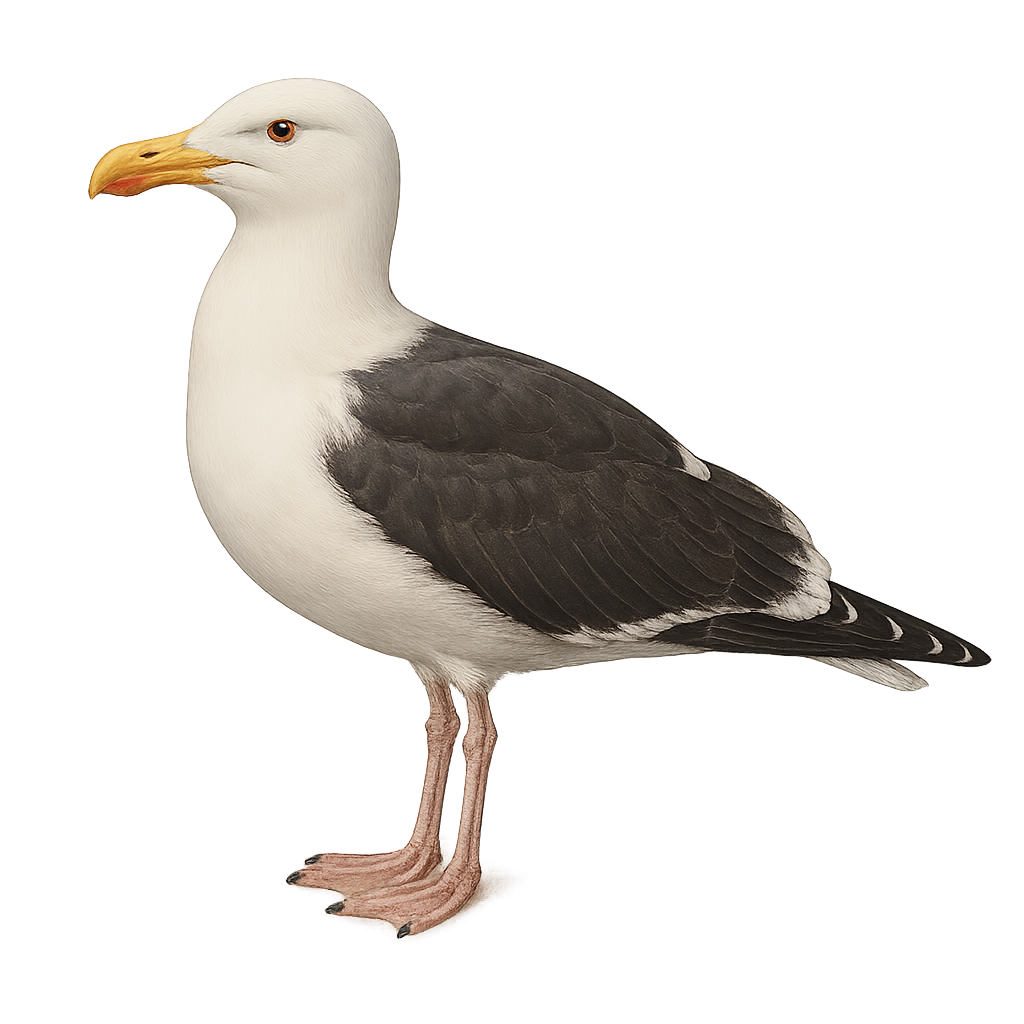Your wildlife photography guide.
Explore the great black-backed gull in detail, study its behavior, prepare your shots.
Where to observe and photograph the great black-backed gull in the wild
Learn where and when to spot the great black-backed gull in the wild, how to identify the species based on distinctive features, and what natural environments it inhabits. The WildlifePhotographer app offers tailored photography tips that reflect the great black-backed gull’s behavior, helping you capture better wildlife images. Explore the full species profile for key information including description, habitat, active periods, and approach techniques.
Great Black-backed Gull
Scientific name: Larus marinus

IUCN Status: Least Concern
Family: LARIDAE
Group: Birds
Sensitivity to human approach: Suspicious
Minimum approach distance: 10 m
Courtship display: March to May
Incubation: 27-30 jours
Hatchings: April to June
Habitat:
Coasts, cliffs, rocky islands
Activity period :
Primarily active during the day, with peak activity in the morning and late afternoon.
Identification and description:
The Great Black-backed Gull, Larus marinus, is the largest gull, with an impressive wingspan of up to 1.7 meters. Its plumage is mainly white with a black back, and it has pink legs. Found primarily along the North Atlantic coasts, it feeds on fish, smaller birds, and carrion. Opportunistic, it often ventures into ports and landfills for food. Although often solitary, it can be seen in groups during nesting. Its call is loud and harsh, typical of gulls. During the breeding season, it builds its nest on cliffs or rocky islands, usually laying three eggs.
Recommended lens:
400 mm – adjust based on distance, desired framing (portrait or habitat), and approach conditions.
Photography tips:
To photograph the Great Black-backed Gull, aim for the golden hours of morning or evening to benefit from soft, flattering light. Use a telephoto lens of at least 400mm to capture precise details without disturbing the bird. If possible, approach slowly and keep a good distance to avoid scaring it. Opt for a simple background, such as the sky or sea, to highlight the subject. Feel free to experiment with different compositions, especially in flight, to capture the majesty of its wingspan.
From knowledge to field practice
A species profile helps you understand an animal. In the field, the challenge is often different. Remembering your own observations.
The WildlifePhotographer app allows you to:
• record your personal observations
• note locations, dates, and behaviors
• revisit your field references over time
• build a private and long-term field logbook
The app does not provide observation locations.
It helps you organize what you actually observe, with respect for wildlife.

